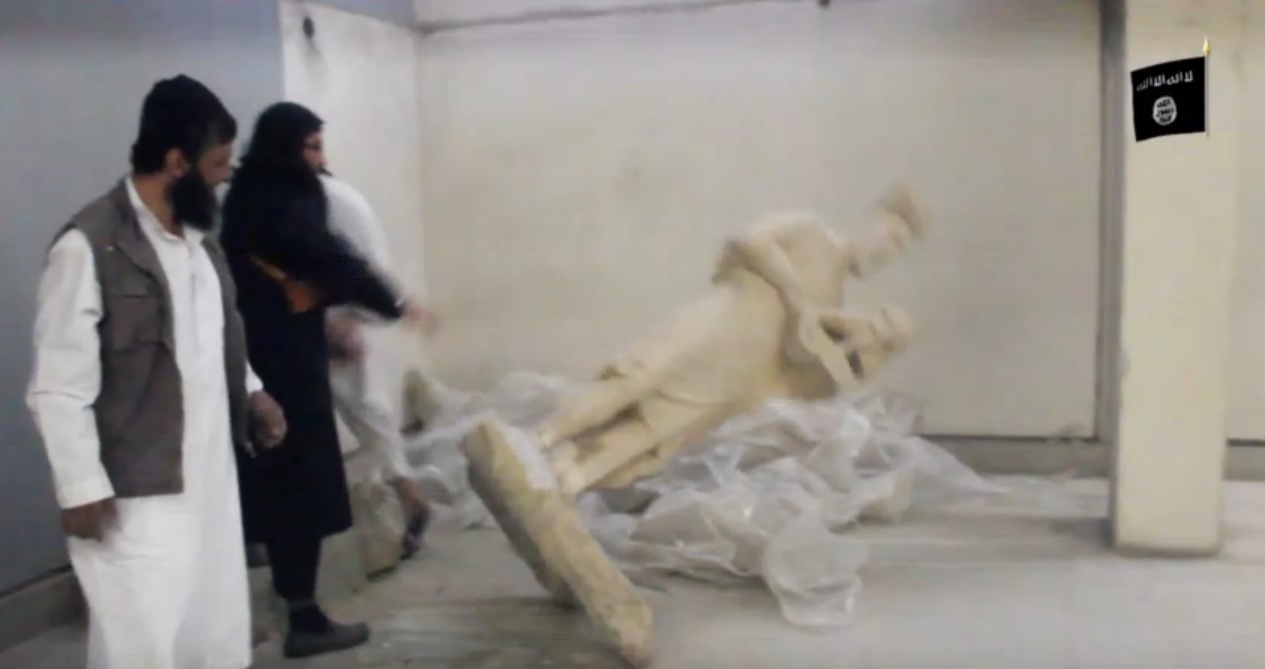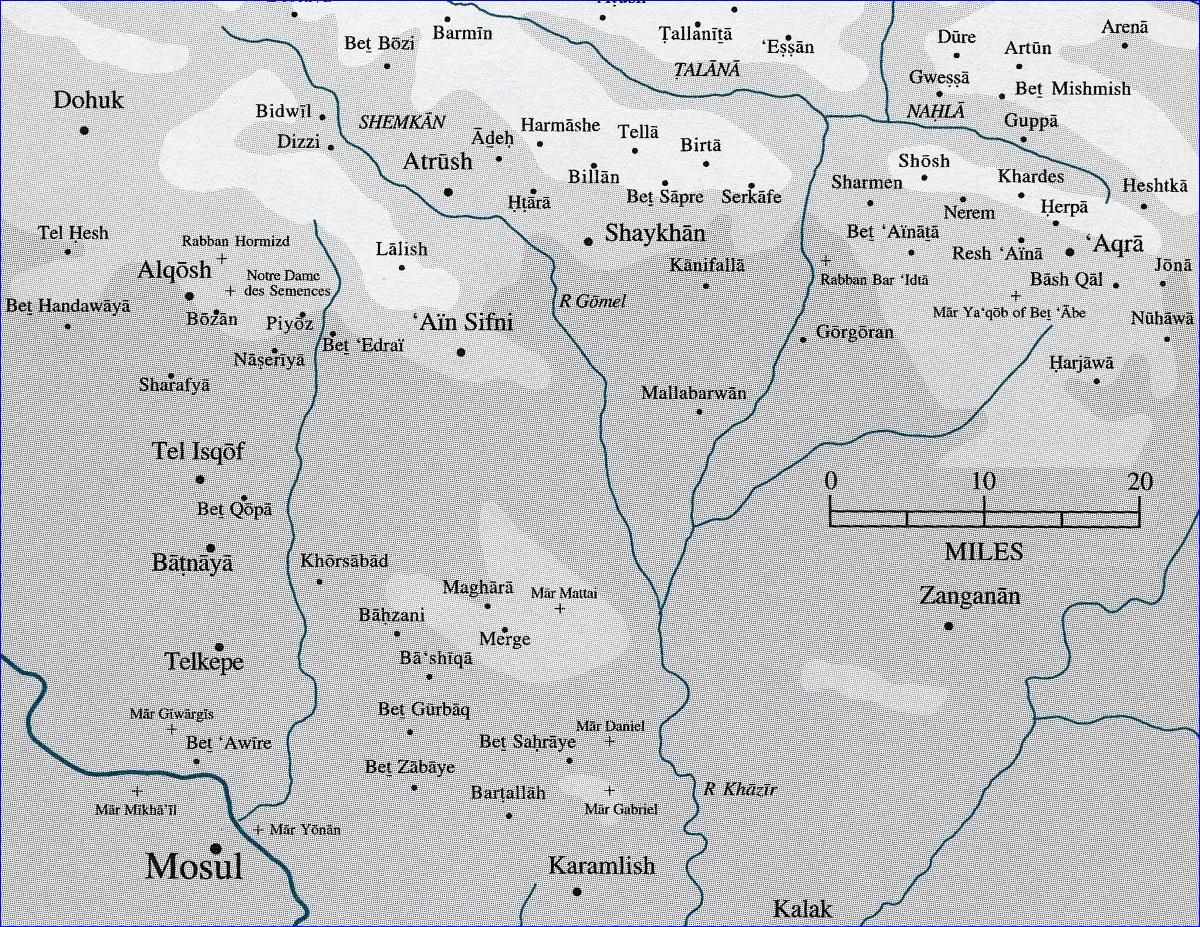Saving World Heritage –
the West’s New R2P Pretext
By Finian Cunningham
March 11, 2015 "ICH"
- Is the defence of world heritage sites in
Iraq the new «responsibility to protect»
doctrine to justify Western intervention in
the geo-strategically important region? The
timing coincides with renewed admonitions
from the United States and Saudi Arabia for
a coalition of ground forces to defeat the
Islamic State network in Iraq and Syria –
and just when Iraqi and Syrian forces appear
to be decisively pushing back the extremists
in both countries. 
The United Nations Secretary
General Ban Ki-Moon this week added his
voice to calls for an international
coalition of forces to prevent the
continuing destruction of ancient cultural
sites and artefacts by the IS terror group.
The initiative comes after the United
Nations Educational, Science and Cultural
Organisation (UNESCO) condemned the campaign
of IS looting and obliteration of
antiquities as a war crime.
IS cadres – also known by
alternative acronyms ISIL or ISIS – have
issued propaganda videos of wholesale
vandalism of museums, churches, sculptures
and other archaeological treasures in
northern Iraq. Images of bulldozers and
sledgehammer-wielding militants tearing down
3,000-year-old porticos and statues have
indeed shocked the world.
Cities under IS control,
Mosul and Nimrud, have seen priceless
artefacts destroyed in unspeakable acts of
nihilism. Nimrud is the ancient capital of
Assyria dating back to 800 BC and has
associations with the great grandson of the
reputed biblical prophet Noah. The next
target for the Islamists is the city of
Hatra, which is home to some of the oldest
known architecture in the world.

The land of Mesopotamia
between the Euphrates and Tigris rivers –
straddling what is now modern Syria and Iraq
– is known as «the cradle of human
civilisation». Its rich tapestry of cultural
heritage is reflected in the hitherto
peaceful coexistence of religions. The
systematic campaign to delete antiquities by
the IS network goes hand-in-hand with the
group’s lethal intolerance and persecution
of other people who do not share its
obscurantist Wahhabi ideology. Christians,
Shia and Sunni Muslims, Yazidis and others
have all been brutally victimised, with
graphic images of beheadings and
crucifixions of men, and women and children
being sold into slavery.
The suspicion is that the
West is preparing to use this powerful
emotive backdrop as a new pretext to justify
military intervention. This seems especially
the case because erstwhile pretexts, such as
«protecting human rights», have run out of
credibility as a political lever on public
opinion.
The US and its Western allies
have long used the doctrine of
«responsibility to protect» or «R2P» as a
flimsy pretext for military intervention.
The concept can be traced back to the
administration of President Bill Clinton
during the 1990s when Washington and its
NATO allies invoked the «moral imperative»
to use military force in former Yugoslavia
to supposedly protect human rights. The
much-vaunted ethical principle has thus
served as a means to interpret international
law in such a way that justifies Western
military interventions, even when those
interventions involve NATO bombardment of
cities, as happened in Belgrade. It is also
a convenient public relations device in
order to convince Western popular opinion to
rally around foreign military deployment.

Of course, an ethical
dimension has always purportedly been used
to justify US and Western wars abroad. We
can go back to the First World War and the
Wilsonian declaration of «defending the
rights of small nations». But the explicit
use of human rights under the R2P doctrine
became elevated to a primary motivating
principle for military intervention during
the past two decades. Part of its appeal was
its emotive leverage on public sentiments.
«It is our moral duty to protect our fellow
human beings by force,» goes the argument.
It was promulgated by such «liberal hawks»
as the current US ambassador to the UN
Samantha Power and President Barack Obama’s
National Security advisor Susan Rice.
Another formative factor was
that a new ideological rationale was needed
to replace the Cold War propaganda narrative
of the US in which it was claimed to be
«defending the free world from Godless
communism». For nearly five decades that old
chestnut served well to give legal and moral
acceptance for American foreign
interventions all around the globe, from
South America to the Middle East, Africa and
Asia. With the dissolution of the Soviet
Union in the early 1990s, the US and its
NATO partners needed a new ideological cover
for imperialist war-making to replace the
then redundant Cold War narrative. They
found success with various tropes, including
the «War on Terror», the elimination of
«weapons of mass destruction», and the
Responsibility to Protect» human rights.
R2P was famously rolled out
to justify the NATO role in Libya during
2011, which eventually saw the toppling of
the government of Muammar Gaddafi and the
ongoing internecine wracking of the North
African country. In March 2011, the US and
its NATO partners claimed that the setting
up of a No-Fly Zone was necessary to prevent
a bloodbath by pro-Gaddafi forces in the
eastern city of Benghazi. The bloodbath
never came but the NATO No-Fly Zone quickly
transmogrified into a seven-month aerial
bombing campaign that led to IS-related
jihadists take over Libya, following the
street lynching of Gaddafi in mid-October
2011.
The trouble with all
propaganda narratives is that there is a
danger of them running out of credibility
steam at some point. The threadbare War on
Terror and the risible ridding the world of
weapons of mass destruction (as in Saddam’s
Iraq) have become tarnished like the R2P
«doctrine». These propaganda devices have
become riven with contradictions, futile
self-defeating blowback effects, as well as
being replete with absurd hypocrisies and
double standards. The evident NATO
destruction of Libya and descent into a Mad
Max-type warlordism – all in the name of
human rights – is indelibly illustrative of
the fraudulent pretensions of Washington and
its European allies.
This partly explains why the
Cold War narrative is being resurrected with
new attempts to paint Russia under President
Vladimir Putin as an «expansionist threat to
global security». But the new Cold War
cliché of demonising Russia has nowhere near
the potency of the former narrative. It just
doesn’t sound credible, with barely a
semblance of facts.
Likewise, the US-led aerial
coalition to defeat IS in northern Syria and
Iraq suffers from a fatal credibility gap. A
significant constituency in the Western
public knows that Washington and its
European allies, along with their despotic
Arab monarchies, are largely responsible for
the creation of IS and other extremist
groups, stemming from the illegal invasion
of Iraq in 2003 and the West’s proxy war
against the Syrian government of President
Bashar al Assad beginning in March 2011. The
flood of refugees in the region and the
brutal persecution of communities by IS are
all attributable to Western interventions
and intrigue. Therefore the invoking of R2P
as a «principle» to justify more Western
military intervention just does not wash
with the public. Indeed, it sounds downright
ridiculous and morally reprehensible.
No, some new emotive appeal
is necessary. And this is where the latest
calls for a coalition to «protect world
cultural heritage» seems to fit the bill –
at least superficially.
Last week, while visiting the
Wahhabi Saudi rulers, US Secretary of State
John Kerry issued a statement saying that
«military pressure» may be needed to oust
Assad. His Saudi hosts – who have funded IS
both financially and theologically – also
stated that «a new coalition force is needed
to defeat IS on the ground».
Significantly, these US and
Saudi appeals for increased military
intervention in the Middle East come at a
time when Syria and Iraq – both backed by
Iran and Russia – have made appreciable
gains against the Islamist militants.
Assad’s forces are tightening the noose on
the militant-held northern city of Aleppo,
while the Iraqi army is pushing against the
IS strongholds of Tikrit and Mosul.
In other words, the ground
war in Syria and Iraq is not suiting the
objectives of Washington as it is
consolidating gains for Russian and Iranian
allies.
A countervailing Western/Wahhabi
Arab intervention would be desirable.
However, the ideological arsenal of pretexts
for US military interventions are depleted,
redundant, spent or throughly disgraced.
«Saving world heritage» and
3,000-year-old artefacts could be just the
new version of «R2P» that is needed by the
US and its Western allies.